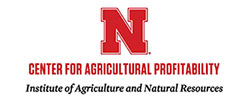Agricultural Economics, Department of

Center for Agricultural Profitability
One-Participant 401(k): Saving for Retirement and Reducing Taxes
Date of this Version
12-20-2023
Document Type
Article
Citation
Groskopf, J., Walters, C., Nelson, D. “One-Participant 401(k): Saving for Retirement and Reducing Taxes?” CAP Series 23-1204, Center for Agricultural Profitability, University of Nebraska-Lincoln, Dec. 11, 2023. DOI: 10.32873/unl.dc.cap026.
Abstract
The adage that farmers and ranchers are often asset-rich and cash poor does indeed appear to be true! According to the United States Department of Agriculture (USDA), just forty percent of farmers contribute to a retirement plan. And because many farmers and ranchers invest profits in their business rather than take a high salary, they show little income on their tax returns. This means they will have paid less into Social Security and their benefits will be lower when they retire. This can create cash flow challenges, especially for an older generation of farm and ranch families wanting to bring the next generation into the operation and keep the business going.
For self-employed farmers and ranchers without full-time employees, the opportunity to invest in a One-Participant 401(k) plan is a way to (1) save money for retirement, (2) reduce taxable income, (3) provide the potential option to borrow from the plan. This series of articles will review these features. This article focuses on saving for retirement and reducing tax liability.

